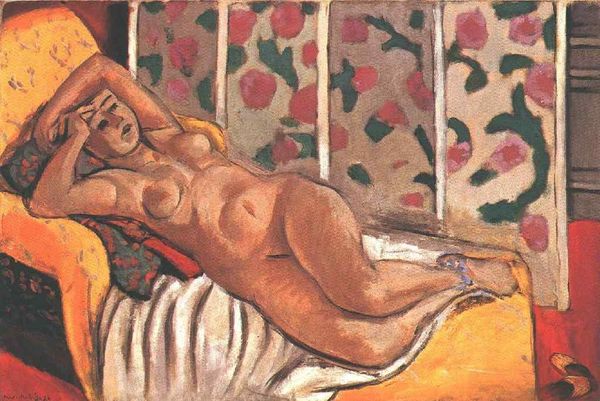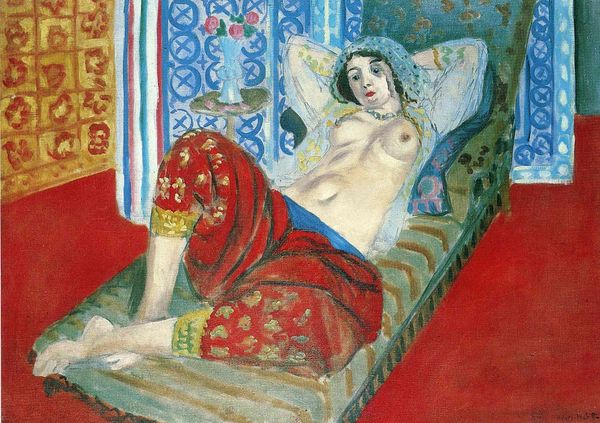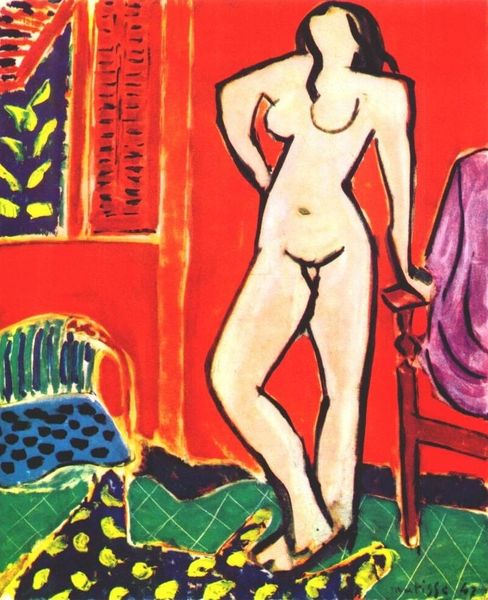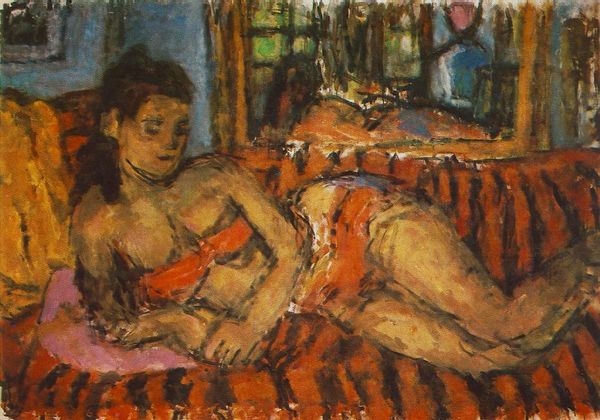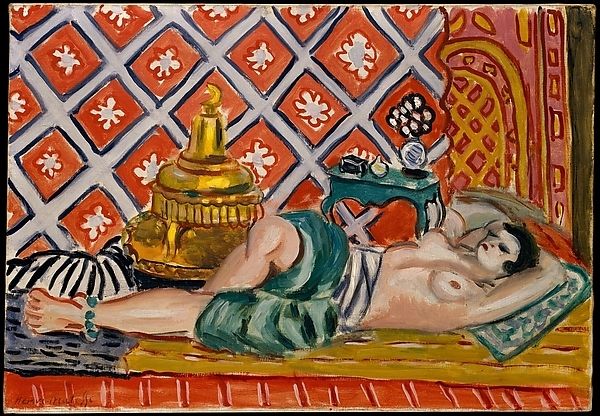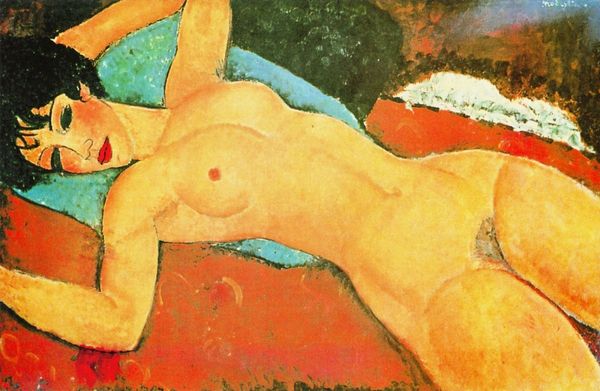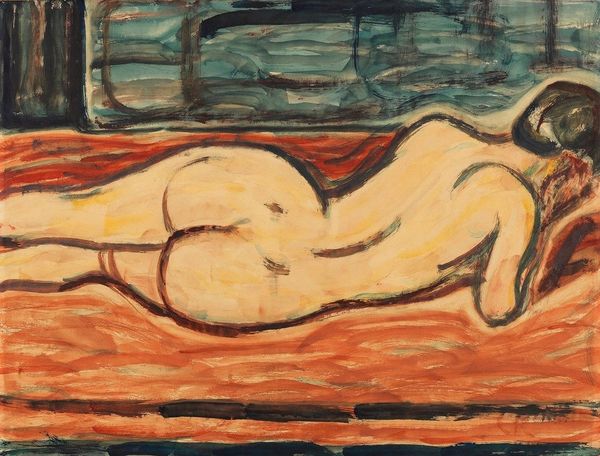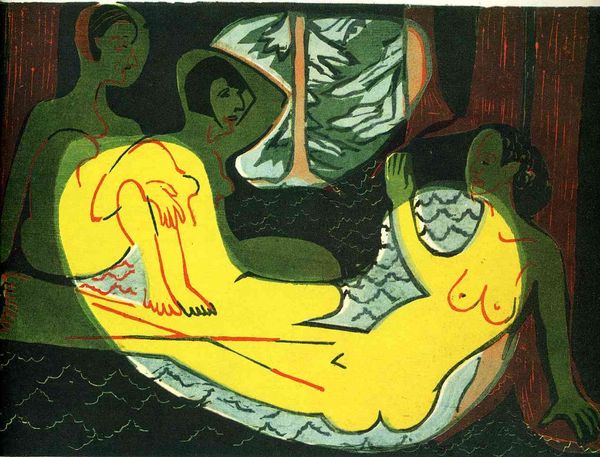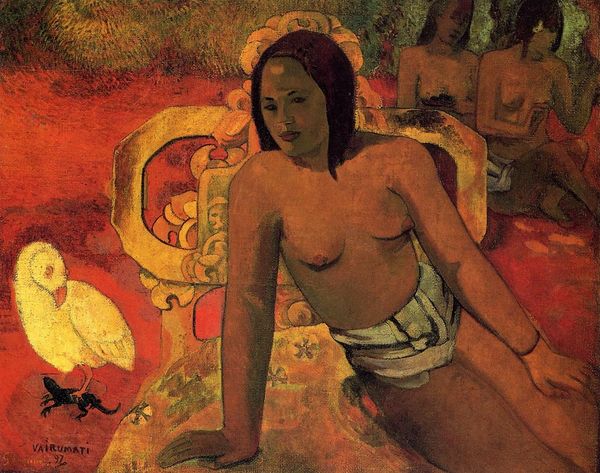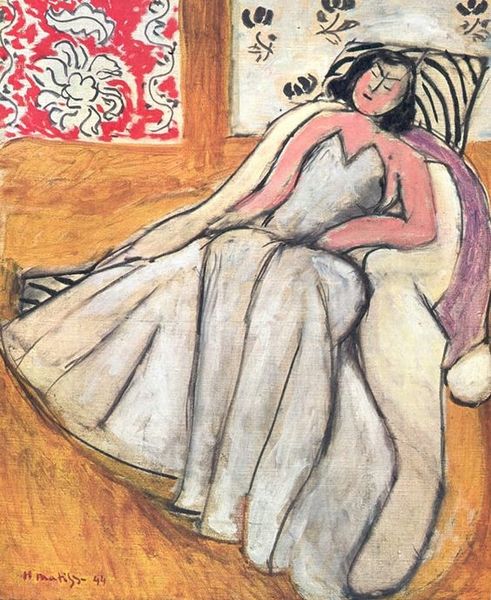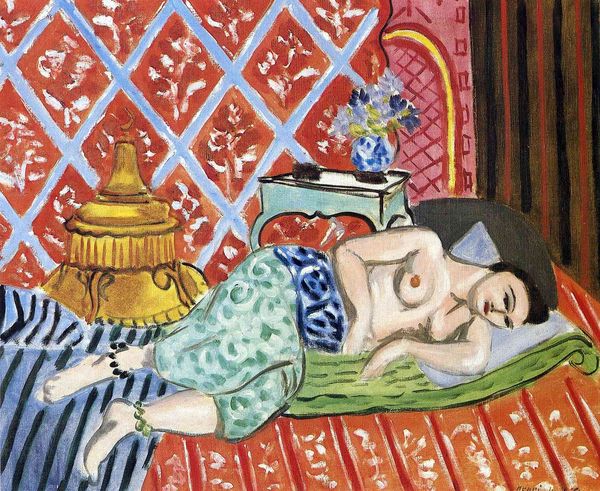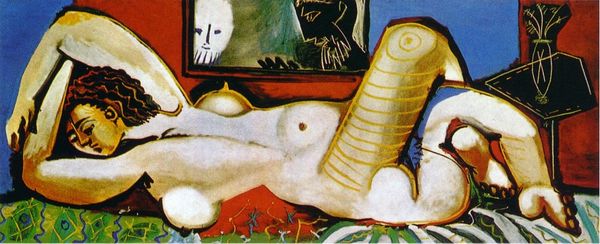
Copyright: Henri Matisse,Fair Use
Curator: Henri Matisse’s "Reclining Nude, back," painted in 1927, showcases the artist’s exploration of form and vibrant color. Executed in oil on canvas, the work demonstrates a Fauvist sensibility. Editor: My initial impression is of luxurious repose, almost decadence. The bold colors and the figure's relaxed posture certainly evoke a feeling of languor and ease. The geometry is very intriguing, everything sits quite balanced. Curator: Yes, it’s a captivating study in contrasts, isn’t it? The figure, while certainly a classical subject, is rendered with simplified forms. Observe how the linear contours contrast against the complexity of the surrounding decor. It's representative of an inter-war return to conservative taste, the Fauvist movement's desire for beauty that also is traditional in form. Editor: Exactly. And this tension is echoed within the very materiality of the paint. There are some passages of thick impasto, giving a tactile, almost sculptural quality, whereas others are more translucent, thinly washed onto the canvas, isn't it wonderful the juxtaposition, not just between image, but application! Curator: Precisely. If we look to Matisse’s historical context, it is worth noting the rise of avant-garde movements in Paris, yet "Reclining Nude" retains certain academic features. The painting demonstrates Matisse’s negotiation with artistic conventions; what, and how, did he subvert traditional portrayals of the female nude? He challenges those ideals, with that pose, while embracing conventional themes for marketability. Editor: And let us not forget that decorative backdrop! Those vibrant floral patterns and intricate designs add another layer to the composition, it contextualizes the body in terms of geometry! What exactly is being communicated by their placement? How do the geometric figures support the image? Curator: That pushes me to appreciate how Matisse invites a close inspection of structure and space. The relationship among line, color, and form constitutes the core of this visual narrative. It’s an arrangement of painterly tensions, not necessarily an easily resolved image, even at first glance. Editor: I concur entirely. This piece truly does provoke thoughtful reflection—beyond any singular "reading." There’s always something fresh to see with continued engagement. Thank you.
Comments
No comments
Be the first to comment and join the conversation on the ultimate creative platform.

